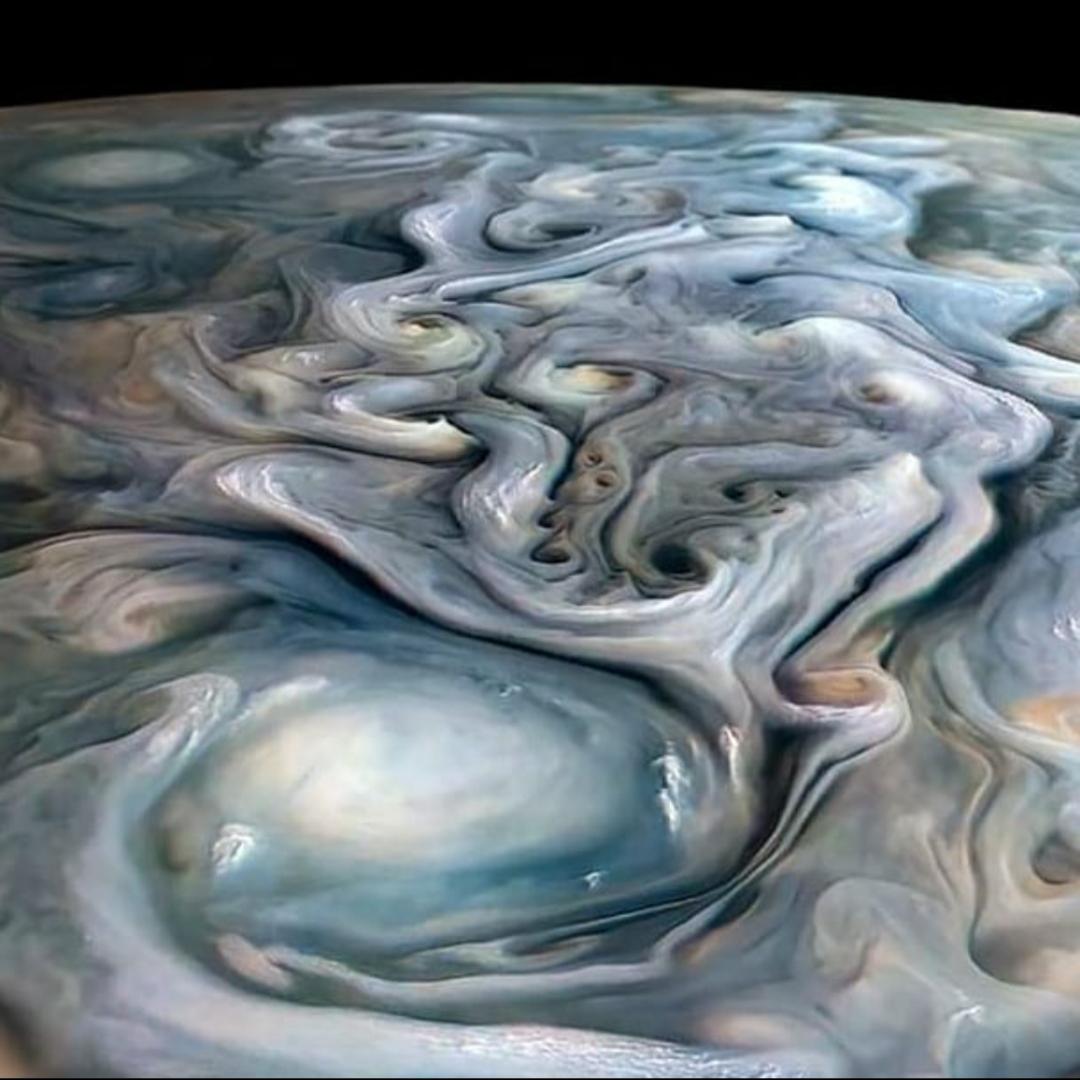
Researchers Just Measured 1500km/hr Winds In Jupiter's Stratosphere, A First Ever.
Share
SM: 900-miles-per-hour winds rage on the gargantuan gas ball.
Using a 27-year-old comet, an international team of astronomers just measured Jupiter’s stratospheric winds for the first time ever. And they’re outrageous. Researchers have already measured wind speeds on Jupiter's troposphere - where its iconic stripes are located - and in its ionosphere - its upper atmosphere.
“Jupiter’s famous bands of clouds are located in the lower atmosphere, where winds have previously been measured. But tracking winds right above this atmospheric layer, in the stratosphere, is much harder since no clouds exist there,” they said in a recent release. But this new study is the first to measure Jupiter's stratospheric wind speeds at the equator and poles with the incredibly sensitive Atacama Large Millimeter/submillimeter Array (ALMA).
“This could represent a 'unique meteorological beast in our Solar System,” researchers said in a study published by ESO, the European Organisation for Astronomical Research in the Southern Hemisphere. NASA’s Juno spacecraft used the JunoCam on ESO’s Juno spacecraft to first identify Jupiter’s winds.

Three views of Jupiter's deep atmosphere taken by the JunoCam imager on 16/09/2020.
Results were largely consistent with models and speeds at the equator were relatively close to predictions. “But what was completely unexpected is what we saw near the poles,” says study-author Thibault Cavalié who led the experiment.
Researchers found winds of 300-to-400 meters per second — roughly 1125 to 1500 kilometres per hour — whipping about the poles in unexpected directions.
“It’s a really hard observation. It’s a really great paper, they really show very nicely these wind profiles in the … upper atmosphere.” says Imke de Pater, a planetary scientist who has previously used ALMA but was not involved in this study.
As seen in Jupiter’s signature red and white horizontal stripes, Jupiter’s winds almost exclusively go eastward or westward. These rules hold true for the troposphere unless a vortex such as Jupiter's red eye causes winds to swirl around like a hurricane. As far as the stratosphere is concerned, however, the winds appear to follow the shape of Jupiter’s auroral rings, which are caused by Jupiter’s magnetic field steering solar winds toward the poles. There aren’t neat bands of troposphere around the auroral rings because they aren't lined up with the poles perfectly.
The anomalous polar wind patterns moving north and south instead of staying east and west are “really mind-boggling,” explains Glenn Orton at NASA’s Jet Propulsion Laboratory in light of the team’s findings.
The simplest way to figure out planetary wind speeds used to be to take a picture of the planet, then another, then see how the clouds moved. However, Cavalié states that this isn't feasible above 2.5 km, because the winds are invisible and there are no clouds to follow.

Instead, researchers studied two compounds that were delivered by the comet Shoemaker-Levy 9 to Jupiter in 1994: hydrogen cyanide and carbon monoxide. As both chemicals have a long lifecycle, and they are still present in the Jupiterian atmosphere. Using cloud movement to track winds, the team was able to track the unique spectral fingerprints of hydrogen cyanide and carbon monoxide and clock the speeds in Jupiter’s stratosphere.
For that purpose, the team identified both types of molecules using their frequencies. Then, the team used something called the Doppler effect, which changes the frequencies as the molecules approach us, or move away from us. By measuring the difference in frequencies between molecules moving towards the telescope and those moving away, the team could quantify how fast the molecules (and the wind) was moving.
Cavalié says future space telescopes may be able to interpret water ice molecules from the comet’s impact as these molecules are so rare on Jupiter. The study also offers a stepping stone for the JUpiter ICy moons Explorer (JUICE) mission that is expected to launch next year by the European Space Agency. That craft will get the most detailed look at Jupiter's moons, including Ganymede, the largest moon in our solar system.




